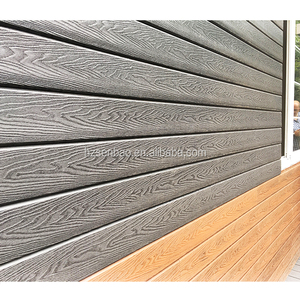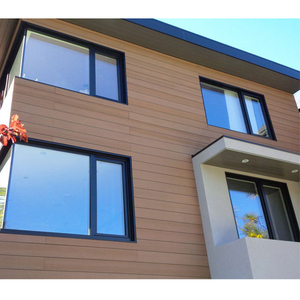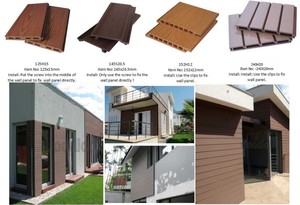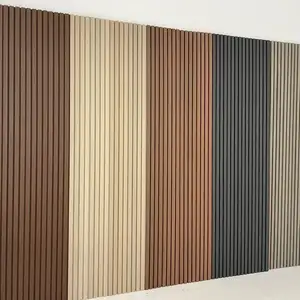
All categories
Featured selections
Trade Assurance
Buyer Central
Help Center
Get the app
Become a supplier

(74683 products available)




















































Wood wall tiles are decorative panels made of wood, designed to be mounted on walls for aesthetic and functional purposes. They come in various types, each offering unique features, benefits, and applications. Here are the key types of wood wall tiles:
Solid Wood Tiles
Solid wood wall tiles are crafted from a single piece of natural wood. This means that each tile is made from the whole wood log without mixing other materials. Because they're made from only one type of wood, they show the natural patterns and textures of the wood used. They come in different colors, from light to dark.
Solid wood wall tiles are durable, which means they can last a long time without getting damaged easily. They also look beautiful and give a warm feeling to any room where they're used. However, because they are made from natural wood, they can be sensitive to changes in the weather or temperature. When it's hot or humid, the wood may expand. On the other hand, it may contract when the weather is cold or dry.
Engineered Wood Tiles
Engineered wood wall tiles are made differently than solid wood tiles. Instead of being cut from one single piece of wood, these tiles are made from several layers. Most of the time, the top layer is made from natural wood, while the bottom layers can be made from different kinds of wood or other materials. Engineered wood tiles are designed to look like solid wood. They come in various styles, patterns, and colors.
Some types of engineered wood wall tiles are even made to look like other things, such as stones or tiles. They are also usually more resistant to changing shape due to weather conditions than solid wood tiles. This is because of their layered design. Because they use a mix of materials, engineered wood tiles can be cheaper than solid wood tiles. This means more people can afford to use them for their walls.
Wood Veneer Tiles
Wood veneer wall tiles are special because they're made from really thin slices of wood called veneers. These veneers are usually just 1/16 of an inch thick. Even though they're thin, they still show the natural wood patterns and textures. Like other wood wall tiles, they come in different colors.
Wood veneer wall tiles are made to be very light and easy to handle. This makes them simple to install on walls. They can also be more affordable than solid or engineered wood tiles because they use less wood material. They still give a wooden appearance when used on walls. Their layered design helps them resist changes in shape due to temperature or humidity more than solid wood tiles.
Wood wall tiles are a popular choice for many homeowners looking to add a natural and warm feel to their homes. These tiles can also be used in commercial spaces to create a cozy and inviting atmosphere. But what exactly are these tiles? Here are some features of wood wall tiles that make them a popular choice for many.
Wood wall tiles, also known as wood wall panels, are used in different applications. Here are some common usage scenarios of wood wall tiles:
Decorative Wall Panels
Wood wall tiles are used as decorative wall panels in residential and commercial spaces. They add a natural and warm aesthetic ambiance to the environment. The wood tiles are crafted from different types of wood with varying textures and colors. This allows designers and homeowners to customize their spaces according to their preferred styles. These decorative wall panels can be installed in living rooms, bedrooms, offices and even restaurants. They create a sophisticated atmosphere where they are installed.
Acoustic Wall Panels
Acoustic wall panels are designed to minimize sound by absorbing it. The good thing is that some wood wall tiles are designed to serve as acoustic wall panels. They come with sound-absorbing foam backing that is attached to the tiles. This makes them a suitable option for areas that require sound control. For instance, theatres, music studios and conference rooms need quiet spaces that have minimal sound echoes. These acoustic panels not only reduce noise echoes but also enhance the visual appeal of the space.
Tile Backsplash
Wood wall tiles are used as a backsplash in kitchens and bathrooms. They offer a warm and unique look as opposed to traditional tile backsplashes. The wood wall tiles are finished with a water-resistant seal. This protects them from moisture and makes them easy to clean. Some of the wood wall tiles that are commonly used as backsplashes include hickory, oak, and maple.
Feature Wall
Wood wall tiles can be used to create a feature wall in living rooms, bedrooms and offices. They add a focal point that draws the eye and improves the overall aesthetic look of the room. The tiles add texture and dimension to the wall. In turn, this creates a visually appealing contrast to the surrounding walls.
Exterior Wall Cladding
Exterior wall cladding involves the use of wood wall tiles to cover the exterior walls of a building. This creates a visually appealing look and improves the building’s structural integrity. Well, wood wall tiles are used to clad exterior walls since they offer a natural look that blends with the environment. Additionally, they provide a protective layer against harsh weather elements. This includes wind, moisture and direct sunlight.
Choosing the right wood wall tiles for an interior space can be challenging. Here are some factors to consider before selecting the ideal tiles.
Consider the style and design
It is important to look at the style and design of the wood wall tiles before purchasing them. Tiles with different wood grains, colors, and textures should be available to match the various styles and designs of spaces. For a modern look, wood wall tiles with a smooth and sleek surface should be considered. If a rustic appearance is desired, tiles with a textured finish should be chosen. Moreover, tiles with vertical or horizontal patterns are available to add visual interest on the walls.
Color and grain pattern
The color and grain pattern of the wood wall tiles should be considered to ensure they complement the overall design theme of the space. Tiles that are light-colored, such as pine, should be chosen to make the room look more spacious. These colors create an airy and open feel. Also, tiles with straight grain patterns are simple and elegant, while those with intricate and swirling patterns add a touch of drama and sophistication.
Functionality
Buyers should consider the functionality of the wood wall tiles. Tiles made of engineered wood should be considered for high-traffic and high-moisture areas, such as kitchens and bathrooms. These tiles are more durable and resistant to warping. Those made of natural wood should be used in low-traffic areas like living rooms. They are more stylish and comfortable.
Quality of the wood tiles
The quality of the wood tiles should be considered to ensure they last longer and provide a good return on investment. The thickness of the wood tiles should be checked because those with greater thickness offer better durability. The construction of the tiles should also be examined. As mentioned earlier, tiles made of engineered wood offer better durability and stability. They can be used in a wide range of settings.
Installation method
The installation method of the wood wall tiles should be considered. Some tiles are installed using glue, while others are fixed with nails. Tiles that are glued are easier to install because they do not require any special tools. However, they are not reusable. Those that are nailed need special tools to fix them. Nonetheless, they are reusable and offer a more durable finish.
Q1: Are wood wall tiles easy to install?
A1: This depends on the specific product. Some like tongue-and-groove boards require nails or screws to secure the wood to the walls. Others, like engineered wood tiles, can be installed using adhesive. As for click-lock planks, they are designed for floating installations. Wood wall tiles for easy installation include peel-and-stick options.
Q2: How long do wood wall tiles last?
A2: This depends on the type of wood, quality of construction, and care. High-quality options like solid wood tiles can last for decades. Engineered wood options can last for 20 to 30 years. Proper care and maintenance, including regular cleaning and resealing, can extend the lifespan of the tiles.
Q3: Do wood wall tiles require special maintenance?
A3: Not really. The wood wall tiles just need regular cleaning. Once in a while, reseal the tiles to protect them from moisture and stains. Solid wood tiles may require refinishing after several years.
Q4: Can wood wall tiles be used in bathrooms or kitchens?
A4: Some wood wall tiles can be used in high-moisture areas like bathrooms and kitchens. These include tiles made from cedar, teak, or bamboo. They have a natural resistance to moisture. Additionally, engineered wood tiles can be waterproof. As such, they are suitable for installation in kitchens and bathrooms.